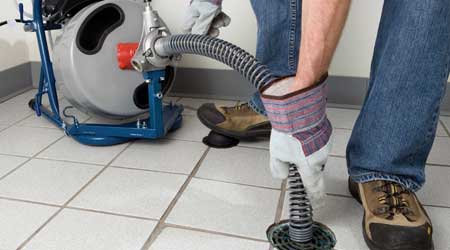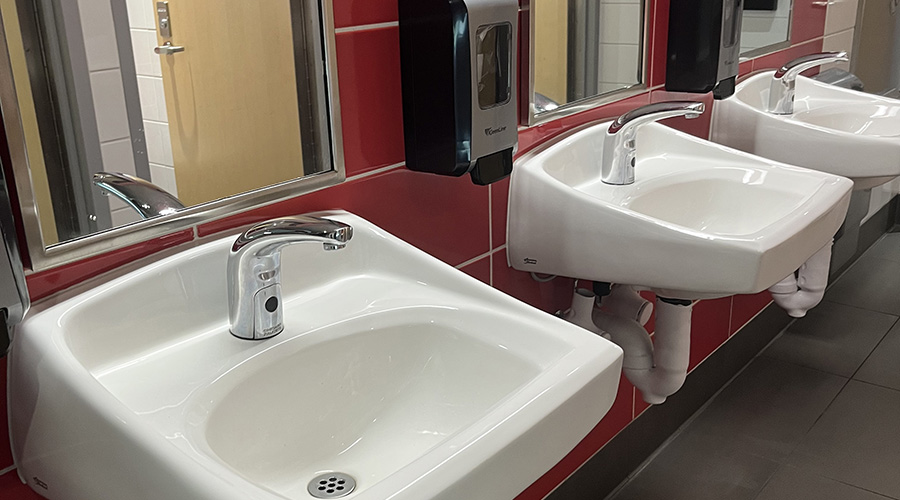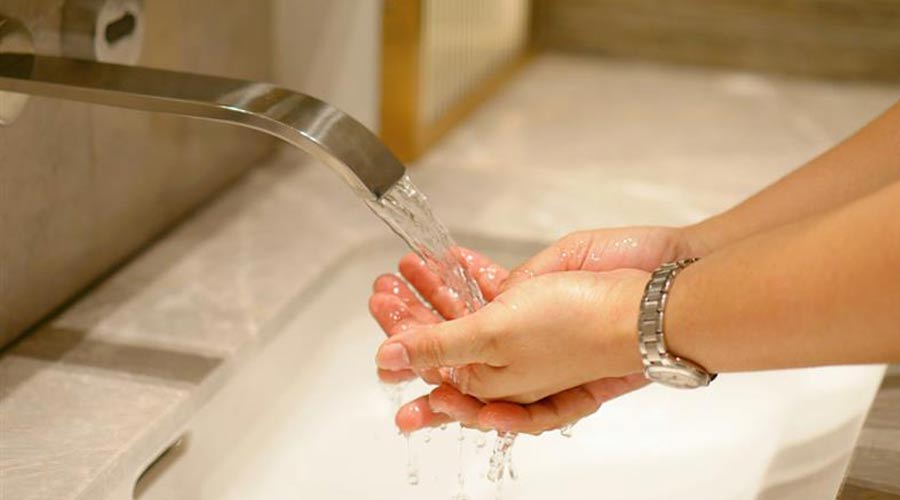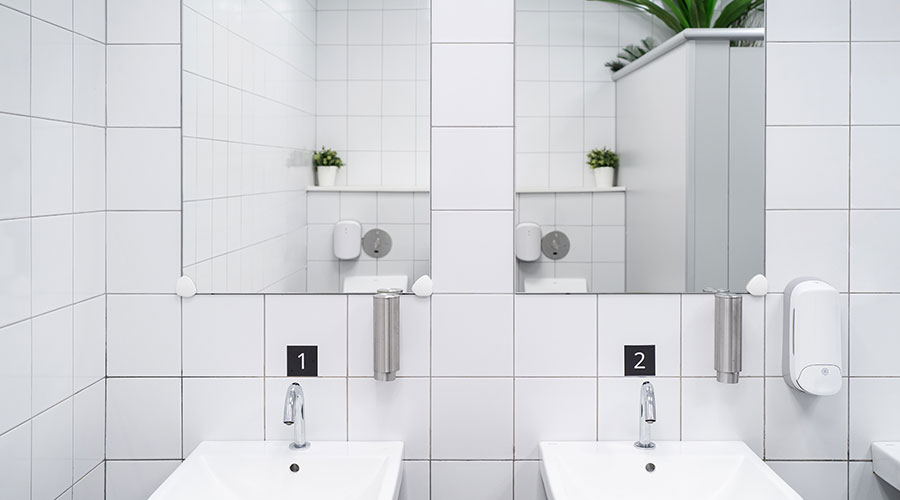 To aid front-line technicians in performing drain cleaning tasks effectively and safely, equipment manufacturers emphasize the importance of having up-to-date information on key issues.
To aid front-line technicians in performing drain cleaning tasks effectively and safely, equipment manufacturers emphasize the importance of having up-to-date information on key issues.Maintenance Insights To Keep Plumbing Systems Flowing
New-generation drain cleaning products address technicians’ needs for efficiency and safety to ensure system performance
Effective drain-cleaning operations are essential for ensuring the safe, reliable operation of institutional and commercial facilities. To provide these services, maintenance and engineering managers need to maximize the department’s investments in drain-cleaning equipment, its operation and maintenance, and the technicians performing the services.
To aid managers and front-line technicians in performing these tasks effectively, manufacturers of drain-cleaning equipment emphasize the importance of relying on up-to-date information on key issues, including equipment selection, maintenance and repair, and equipment training and use.
Technology evolution
As with many products for institutional and commercial facilities maintenance, drain-cleaning equipment has evolved in recent years as user demands have grown to meet the needs of changing facilities.
“Responding to user demand, drain-cleaning equipment has evolved over the past few years to become safer, easier to use, cleaner and more nimble,” says Marty Silverman, vice president of marketing with General Pipe Cleaners. In particular, manufacturers have upgraded existing products and rolled out new units that meet specific needs for a variety of applications.
“There are more options available than ever concerning the variety of equipment being offered,” says Mark Speranza, vice president of marketing with Electric Eel. “Drain-cleaning machines have become more application specific. Maintenance professionals need and expect the equipment they are using to be effective and efficient, and manufacturers of course want to provide quality products with features to make the job easier and faster.”
Brendon Goede, underground technologies product manager with Ridgid, says the past few years also have seen drain-cleaning products become more portable and more often powered by batteries.
“The product which exemplifies this the most is high-speed drain cleaning,” Goede says, adding that the company’s offerings include machines that also are easier to carry and are powered by a hand drill. He points to users’ interest in improving the speed of drain cleaning operations.
“With the growing acceptance of high-speed drain cleaning, we also have seen a change in the way customers use our products,” he says. “High-speed drain cleaning is more about using the speed to remove blockages, while drum and sectional machines use power over speed to remove blockages. Training customers on the difference in cleaning techniques ensures that products are used safely and correctly each time.”
Speranza highlights additional advances that are intended to improve technician efficiency.
“Cable machines with the auto-feed feature can save the operator time and greatly reduce the wear and tear on the user,” he says. “The auto-feed feature is especially advantageous on the larger mainline machines that utilize ⅝- and ¾-inch cables that are very heavy to work with. The auto-feed feature allows the operator to feed and retract the cable with the push of a lever versus physically pushing the cable in by hand.”
Advances in new-generation machines also address the ever-present need for safety.
“Professional-grade cable style drain cleaning machines now include a guide tube and power feed in order to increase the safety and ease-of-use,” Silverman says. “These features essentially separate the end user from the cable, which significantly reduces injuries on the job. Simultaneously, these features make it easier to train new end users and increase their effectiveness at clearing drains.
“Most professional-grade machines now have closed drums to store the cable or snake. This makes it much less likely that the unit will spray waste water around the work site during use, making them cleaner and safer.” He adds that new offerings combine more power in smaller packages to improve technician mobility.
“Facility maintenance engineers have told us that up to 75 percent of the grease that is impacting their pipes is located within 20 feet of a kitchen sink,” he says, adding that a mini-jetters produces 1,500 PSI at 1.4 gallon per minute to more quickly remove grease from small drain lines. “Plus, the unit is configured in a tool box that only weighs 23 pounds. The maintenance engineer can grab this unit, take it directly to the affected sink and be working before they could even transport other types of older, more bulky equipment. Small is the next big thing.”
Related Topics:














